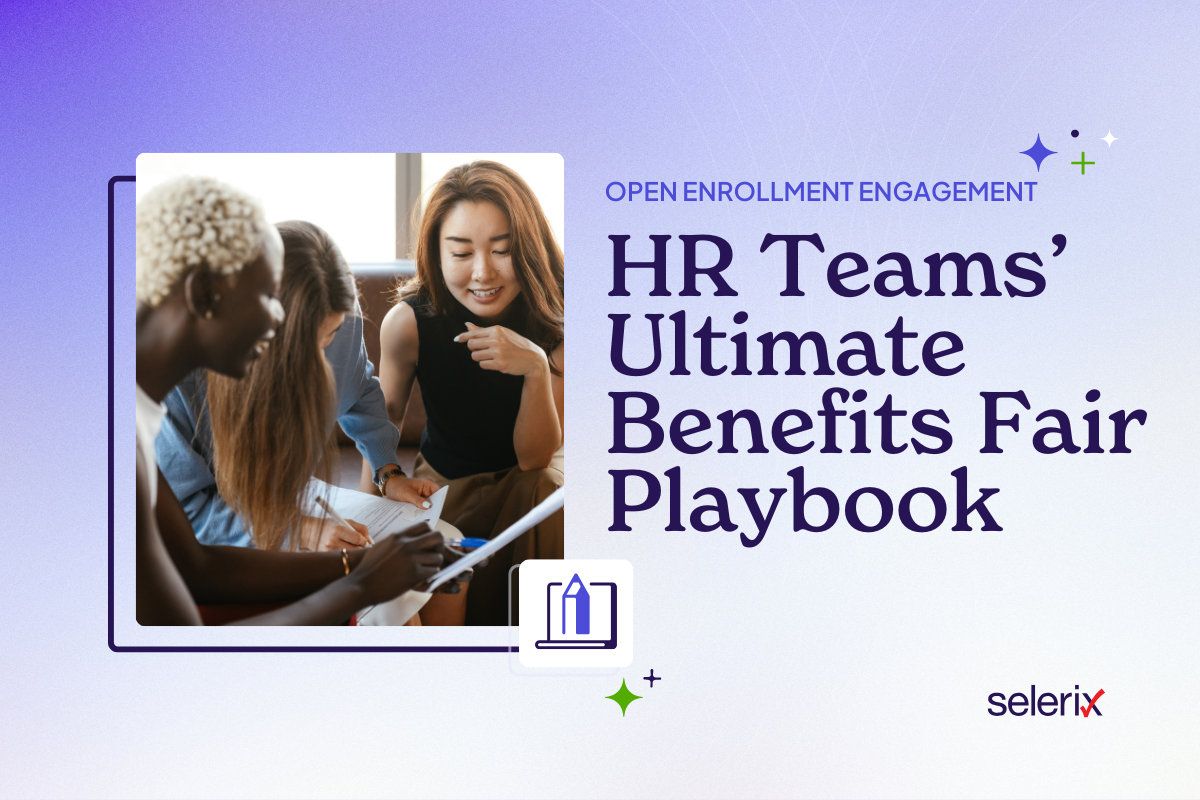Your Benefits Fair Playbook: Engaging Employees Before Open Enrollment Begins

Think of your benefits fair like a mini theme park for employees: each booth is an adventure, every session is a ride into clarity. The goal? Make sure employees leave not just informed, but excited and confident about their benefits choices.
Open Enrollment can be overwhelming—but a well-run fair turns confusion into engagement. If you want fewer frantic last-minute emails, fewer “What’s an HSA again?” questions, and more employees making smart decisions, a benefits fair might be your best investment.
Here’s your ultimate guide to planning a benefits fair that works.
Why Benefits Fairs Matter
Emails and intranet posts have their place, but they can only go so far. Employees learn best when they can interact, ask questions, and see real-life examples. A benefits fair gives HR teams a direct, interactive way to:
- Clarify complex offerings in real time (from high-deductible plans to retirement savings)
- Build trust through live conversations with HR and vendors
- Create excitement that encourages employees to actually engage with their benefits
- Reduce last-minute questions and enrollment errors that clog your inbox during OE
When employees walk away feeling confident, you save time, reduce stress, and set the tone for a smoother enrollment season.
Step 1: Pre-Planning Is Everything
If your fair is a “mini theme park,” then this is your blueprint. Skipping pre-planning is like opening a rollercoaster with no safety checks—it won’t end well.
- Set Clear Goals: Decide what success looks like. Do you want higher attendance? Fewer OE help tickets? Improved understanding of new benefits?
- Build a Budget: Think venue, catering, vendor participation, materials, and incentives. Even small perks (like gift cards or snacks) can go a long way.
- Secure Vendors Early: Your providers are part of the show. Lock them in with enough time to prepare booths, demos, or presentations.
- Develop a Timeline: Map out major milestones—booking spaces, designing materials, sending invites, and final promotions.
Step 2: Choose the Right Format
Not all workforces look the same, so don’t assume one-size-fits-all.
- In-Person: Best for onsite teams. Creates buzz, energy, and face-to-face engagement.
- Virtual: Ideal for remote or hybrid organizations. Plus, you can record sessions for later.
- Hybrid: A little more work to pull off, but it combines accessibility with live energy.
Pro tip: Even in-person fairs should include a digital follow-up hub with recordings, FAQs, and resources so no one misses out.
Step 3: Create an Experience, Not Just an Event
This is where you turn your fair from “obligation” into “opportunity.”
- Interactive Sessions: Host live Q&As on hot topics (HSAs, FSAs, wellness credits).
- Games and Giveaways: Spin-the-wheel prizes, scavenger hunts, or trivia quizzes tied to benefit knowledge.
- Personalized Guidance: Offer quick 1:1 “benefits coaching” sessions where employees can ask about their unique situations.
- Wellness Tie-Ins: Partner with wellness vendors for chair massages, healthy snacks, or mini fitness sessions—it keeps energy high.
Think of it like designing a theme park map. The goal is to have enough variety that employees want to visit multiple “rides.”
Step 4: Promote Like a Pro
The best fair in the world won’t help if no one shows up. Promotion is half the battle.
- Save the Dates: Send initial announcements early so employees can block time.
- Multiple Channels: Use email, intranet posts, text reminders, posters, and even manager shout-outs in team meetings.
- Sneak Peeks: Share teasers about raffle prizes, food, or vendor highlights.
- Answer “What’s in It for Me?” Every promo should emphasize how the fair will make employees’ lives easier—less guesswork, more clarity, real rewards.
Step 5: Measure and Improve
Don’t just pack up and move on—measure the impact.
- Attendance: Who showed up? Which sessions were most popular?
- Engagement: How many questions were asked? How many activities did people participate in?
- Satisfaction: Send a quick post-event survey to gather feedback.
- Knowledge Gain: Ask employees how confident they feel about OE before and after the fair.
The data you collect makes it easier to prove ROI to leadership—and improve your next event.
The Bottom Line
A benefits fair isn’t just a box to check. Done right, it’s an experience that transforms OE from a headache into a highlight. Employees feel empowered, HR teams feel supported, and the organization sees stronger participation.
The tips above will get you started, but if you want the full playbook with detailed checklists, timelines, and engagement strategies, grab our Benefits Fair Planning Guide. It’s everything you need to take the guesswork out of planning and deliver an event that works.

